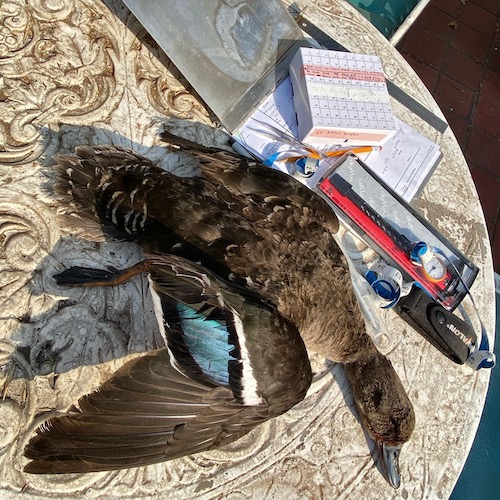African Black Duck
The African Black Duck (Anas sparsa), also known as the Black River Duck, West African Black Duck, or Ethiopian Black Duck, is found in eastern and southern Africa. They are among the 13 mallard-like species conclave worldwide. Overall plumage on this medium sized species is dark grey or black, with large white spots on their wings. The iridescent blue or purple speculum can be seen in flight or at rest, but are most readily seen in flight. The other prominent feature of the African Black Duck species is their bright orange legs and feet, which boldly contrast from the uniform, dark plumage. There are slight differences between the males and females. Females have dull orange legs and feet and are also slightly smaller in stature.
Available Hunts
While the majority of the Africa Black Duck population is found in eastern and southern Africa, there are populations found in western equatorial Africa, southeast Nigeria, Cameroon, and Gabon. African Black Ducks are not gregarious, often seen living in pairs or small flocks, and are associated with running rivers. They’re tough to hunt for this reason. Because of this, individuals and pairs are highly territorial at any time of year, but especially when pairs are breeding. This species does not have a defined breeding season since individuals in different areas breed at different times of year. Nests are built on the ground above flood levels using driftwood and grasses. The female alone incubates the four to eight eggs, protects, and rears hatchlings.
African Black Duck is an omnivorous species that often flip over rocks in search of larvae and pupae. Other staples of their diet include aquatic and terrestrial plant material, agricultural grains, small fish, snails, and crabs. Foraging behavior is crepuscular (feeding at dawn and duck) as this is a secretive species. Preferred foraging areas are fast-flowing rivers and streams near wooded and mountainous country. African Black Ducks will use shallow rivers and streams during the day, while they prefer to use large open waters at dusk.
VAALRIEVER UNICORN. Only slightly wider than a Land Cruiser, the slender Vaal River tributary bends through parched landscaped like a long indecisive snake. Crunchy steps crept along the top bank, me wishing for rocks in my pocket to ballast the gale wind, knowing our quarry would be fast held to a lee bank. African Black Ducks are among the bakers dozen mallard-like ducks worldwide and according to waterfowl geneticist Dr. Phil Lavretsky, no wild DNA samples had yet been collected. They’re a peculiar “mallard.” Social wallflowers. Mallard-sounding but not particular vocal. Shy. Secretive, really. Preferring river currents where they’ll feed on aquatic larvae, roosting on large water bodies. According to locals, African black ducks’ home range might be mile and a half radius river stretch, associated habitats. Singles and pairs mostly. Unlikely to decoy, hard to find. Their Latin species name sparsa literally translates to “splashed.” Coffee bean-colored plumage relieved with heavy white paint-like droplets carelessly dripped from the pail across its back. Blood orange feet. Blue bill with black saddle. Mallard-like blue-green speculum, double white wingbars. Those thoughts suddenly interrupted when a single dark form exploded from the shadow of an overhanging snag, clearing 20 spell-bound meters before regained my senses, instinctively shouldering the SBE3, sending copper-plated Boss 4s payload its direction. Hefting the Africa black duck’s weight, world subspecies number 122 scratched. One less unicorn in the world and Lavretsky’s first wild-harvested DNA sample.









